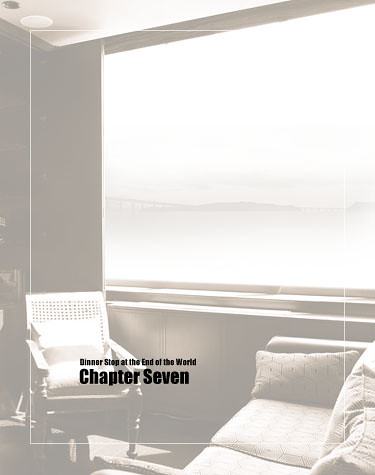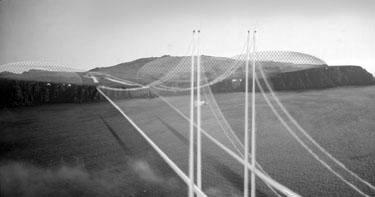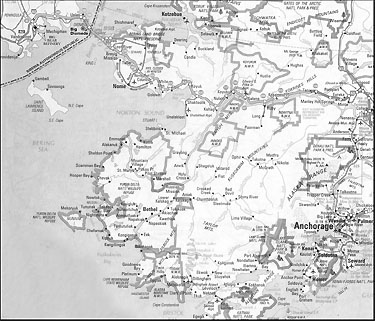
Realists are, as a rule, only men in the rut of routine who are incapable of transcending a narrow circle of antiquated notions." -- Theodor Herzl
Dream and deed are not as different as many think. All the deeds of men are dreams at first, and become dreams in the end." -- Theodor Herzl
Rupert Zimmerman would tell you that he believed only in what he could see. The problem was that as he worked to build one of the world's great wonders, he knew that he was actually already aware of much more than met his eyes. This troubled him. Zimmerman lived alone in a suite in one of his prefabricated towers in Wales. A vast picture window gave him an unobstructed view of his bridge... but Rupert was becoming ever increasingly aware that it was NOT his bridge, nor Martin's or Elizabeth's. He thought of Samuel Morse: "What hath God wrought?" was his initial thought when the telegraph sprang to life. The bridge belonged to the world... it was something that's time to be had come. Rupert Zimmerman was simply the instrument... in, could it be?, the hand of... God?
Framed by the enormous window, perception of the bridge itself was ever changing with every new season... even every new day! Sometimes the bright Summer sunlight defined the structure precisely. On a foggy day you could perhaps see a few of the marking lights... extreme fog left you staring at a window full of grey nothingness. On a crisp Winter day when the Sun was below the horizon, you could see every light, but not the bridge itself. Zimmerman too was aware of the thousands of cables that worked together to secure the great bridge in place. They were below the water and out of sight. Most of the mass of the bridge's unique pontoons was below the surface. O'Malley had designed them to remain extremely stable in the erratic currents... inspired by proportions found in the natural world.
His wife, Pat Zimmerman, lived in Virginia. She was a lovely woman who had stood by Rupert through decades of failures and successes, but she simply couldn't take the cold dark climate of Wales. Rupert was considered a war criminal in the lower 48 now so he slipped into the country to see her on a fairly regular basis, but without a pattern. Pat's home in Virginia was warm and welcoming. Rupert's suite in Wales was, to put it simply, a "man cave." The furniture was minimalist, to say the least.
The simple white walls were punctuated by large prints of black and white photographs. Beautiful nature photography by Ansel Adams shared the room with the work of Baltimore photographer A. Aubrey Bodine. Bodine had captured the environment of the Chesapeake Bay and the construction of the first bridge across the bay in the 1950's. Bodine went into the steel mills of Baltimore and photographed the muscular men making the molten material from which great ships and bridges, towers and transport machines were formed.
When the Cathedral of Mary our Queen was being built, Bodine climbed the scaffolding to capture stonemasons building a modern building with their ancient craft. Bodine also captured sublime moments in Baltimore's community: women washing the rows of marble steps on the fronts of seemingly endless rowhouses... children playing in fire hydrants, stevedores and Chesapeake Bay fishermen all were captured by Bodine's observant eye.
As a boy, Zimmerman had been captivated by the photography of Bodine. The Baltimore Sun Sunday Magazine regularly printed his work and the photographer masterfully captured the spirit of a muscular port city that had had a hand in building a great nation. The 'Brown Section,' as it was called, was a weekly journey into the city's otherwise unnoticed wonders. Bodine worked as a photographer for The Sun for fifty years! Rupert was fascinated by men and women with vision... and the ability to see things in new ways.
On a glass coffee table sat a well-worn copy of Bodine's 'Dignity of Work.' There was also an even more dog-eared copy of Theodor Herzl's Aultneuland... Herzel's novel presented a vision of modern day Israel but was published in 1902, when there was no such nation. Once Zimmerman had entertained the O'Malleys and the Greenes in his suite and Pastor Greene asked him abut it. Greene's wife was a fine photographer so as Elizabeth showed her through her father's collection; the industrialist, the engineer and the man of God had lost themselves in conversation.
Kris found herself drawn to a small photo in an out of the way place. Here was a photo Zimmerman himself had taken of his first grandchild at seven months. Rupert had crouched low to the floor to capture the girl's first attempts to crawl. Her cheeks were rosy from the exertion and her smile beamed: "Look what I can do!" Indeed her heroism seemed right at home beside the larger, more prominent images of steelworkers and stevedores. Zimmerman seemed to possess a keen vision of man's noble potential. Greene would call it 'Imago Dei.'
Herzl was a man with a vision... it is safe to say he was tormented by it." said Rupert: "The eerie thing is that he was spot-on in describing the nation that was born, or some say REBORN in the so-called 'Promised Land.' When Herzl wrote his novel the land was securely in the hands of the Ottoman Empire. In 1917 England's foreign secretary Arthur Balfour wrote a declaration stating that this land should indeed be given as a homeland to the people who had inhabited it since ancient times. World War I saw the end of the empire and British control. It wasn't until 1947 that Israel was truly 'reborn' in the wake of that terrible war."
Rupert was a man who was prone to ramble on. Greene was the kind of friend who tolerated it because he sensed the man's need to handle ideas many considered outrageous. Zimmerman's insecurity required that he 'footnote' his thoughts, making him a poor conversationalist. Greene was a man of vision too, and sensed this. "Did you know that this little nation is the size of New Jersey in the lower 48, yet she produces more agricultural output than most large nations of Europe?" Zimmerman opined.
When I wire flowers to Pat, my wife in Virginia, it is safe to say that there is a good chance they came from an Israeli greenhouse!" Rupert went on to describe the amazing technology coming out of this small nation. Artificial sight for the blind, smart cars that 'drove themselves' and cutting-edge agricultural innovation all eminated from this tiny plot of ground. Indeed, Rupert, Martin and Elizabeth looked to this innovative people for much of the wisdom they needed for their work.
Zimmerman lamented the unfulfilled parts of Herzl's vision. In Aultneuland, there were no prisons. There were farming communities where men were reintroduced to healthy participation in greater community. The stark reality was that prisons around the world had only grown in population and had become schools for societal dysfunction and recidivism. "What," Zimmerman wondered, "would it take for Herzel's vision to become reality?" Zimmerman also lamented that Herzl had envisioned a world where Arab and Jew lived and worked side by side in peace. After the establishment of the nation of Israel, her Arab neighbors Egypt, Syria and Jordan all rushed to wage war on her. Much of the Arab population was incited to flee Israel with the promise that they would return behind the conquering armies. When that didn't happen many of them became permanent refugees. The nations they fled to never enfranchised them. In their bitterness of soul they became easily radicalized.
How does one rebuild the human spirit?" Rupert had asked Greene. He clearly identified the failures in Herzl's vision as failures to do just that. Yet he balked at the notion of so-called "blind faith" in an unseen Divine. He saw Greene's work as that of inspiring men to a higher standard for the here and now. Greene was a man of another Kingdom. Still, when a man like Pastor Greene labored to build the works of this unseen Kingdom, the fruits inevitably flowed forth into the world we know now.

Bering Strait Bridge terminus at Big Diomede.

(to be continued) [click to read]
[click to read ]
Copyright © 2015, The Kirchman Studio, all rights reserved

No comments:
Post a Comment